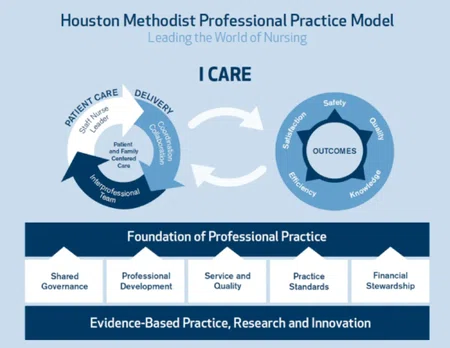

Contact us at CNREPHelp@houstonmethodist.org
Questions or comments?
© 2023. Houston Methodist, Houston, TX. All rights reserved.
NURSING SCIENCE
Nursing-sensitive indicators for nursing care: A systematic review (1997-2017)
Article Critique by Alexis Hayes, PhD, MSN-Ed, APRN, FNP-BC
Article Critique by Alexis Hayes, PhD, MSN-Ed, APRN, FNP-BC

Title:
Nursing-sensitive indicators for nursing care: A systematic review (1997-2017)Published: May 2020
Level of Evidence: Level A
What was the purpose?
To provide a comprehensive review of the literature regarding nursing-sensitive indicators from the years 1997-2017.
What was the population studied?
Nursing-sensitive indicators were reviewed in registered nurses (RNs) and licensed practical nurses (LPNs). However, when evaluating the overall patient-focused outcome indicators such as medication administration errors, adverse drug events, length of stay and nursing care hours per patient day, unlicensed assistive personnel (UAP) were also included.
Was the setting comparable to Houston Methodist? Were the nurses like our nurses?
Yes, many of the settings were comparable to Houston Methodist. The settings included: general hospital settings (27), teaching hospital settings (11), and a military hospital (1). Twenty-nine of the studies were performed in the United States of America (USA), while the remaining 10 were conducted outside of the US.
Did they use appropriate methods?
Oner et al. (2020) states a qualitative (narrative) design with a deductive approach was used. However, this article was a systematic review, representing the highest evidence level. This systematic review also had a quantitative (numerical) component to assess the relationships between nursing-sensitive indicators. A systematic review was appropriate for this study. The framework used to guide the study involved a Structure >Process>Outcomes concept, which indicates there are Organizational-Focused Structural Indicators that lead to Nursing–Focused Process/Intervention Indicators that directly affect Nurse and Patient-Focused Outcome Indicators (See figure 1). Additional methods of analysis were utilized to assist with the most common indicators listed within the abstract of each article.
What were their findings?
A total of 39 articles were reviewing patient focus outcome indicators (dependent categories) and nursing focus outcome indicators (independent categories).
Patient-focused outcome indicators included nosocomial infections, mortality, failure to rescue cardiac arrest, patient falls, patient falls with injury, pressure ulcer, deep vein thrombosis, medication administration errors, adverse drug events, length of stay and patient satisfaction as dependent categories. A negative, positive or no relationship between those specific patient-focused outcome indicators was evaluated across studies to the independent categories such as length of stay, licensed practical nurses (LPN), nursing care hours per patient day, registered nurses (RN) and unlicensed assistance personnel (UAP) and total nurses (RN+LPN+UAP) (see figure 6, 7, 8,9 and 10).
Nurse-focused outcome indicators included nurse job satisfaction, nurse burnout and nurse turnover as dependent categories in relationship to the registered nurse specifically. A negative, positive or no relationship was evaluated based on the RN’s experience and the ratio of patients assigned to the RN (independent categories).
Do their findings make sense?
The novice and even experienced reviewer may have difficulty understanding results due to the inverse, positive, negative and significant relationships discussed but not clearly defined. The most consistent nurse-sensitive indicators in this study were the ratio of patients to RNs, RN proportion (the amount of nursing staff that are RNs) and nurse education. In a review of the ratio of patients to the RN, Oner et al. (2020) noted a positive relationship between mortality, failure to thrive, nurse job satisfaction and nurse burnout. Nursing education was significant for nurse retention and patient mortality. There were inverse relationships with nosocomial infections, mortality, pressure ulcer and medication administration errors regarding RN proportion.
How did things change?
The findings suggest further research is vital to quality nursing-sensitive indicators and policy development.
How is this important for nursing?
Nurse-sensitive indicators are critical to patient outcomes, the well-being of nurses, and the entire structure of the hospital organization.
Read the full article ›
Reference:










